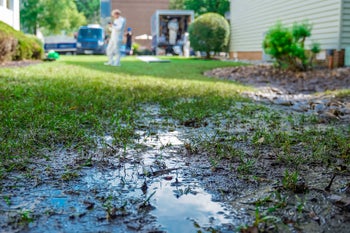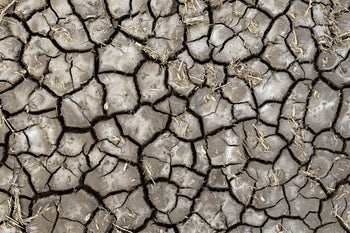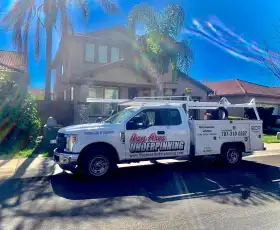How Expansive Soil Affects Your Home’s Foundation
Table of Contents
1. What Is Expansive Soil?
2. What Happens To A Foundation On Expansive Soil?
3. Building On Top Of Problematic Soil
4. Does Homeowner’s Insurance Cover Damage Caused By Problematic Soils?
5. How To Avoid Foundation Problems
6. Signs Of Foundation Trouble & How to Address Them
Expansive soil is one of the leading causes of foundation problems we see here in California. Other leading, related causes include poor soil compaction and improper drainage around the foundation.
If your home was built on expansive or problematic soil, your foundation can settle and show signs of damage, including sinking, uneven floors, wall cracks, and more.
In this article, you’ll learn what expansive soil is, other ways it can affect foundations, steps you can take to avoid problems with expansive soil, and how local foundation repair professionals like Bay Area Underpinning can help you address these issues.
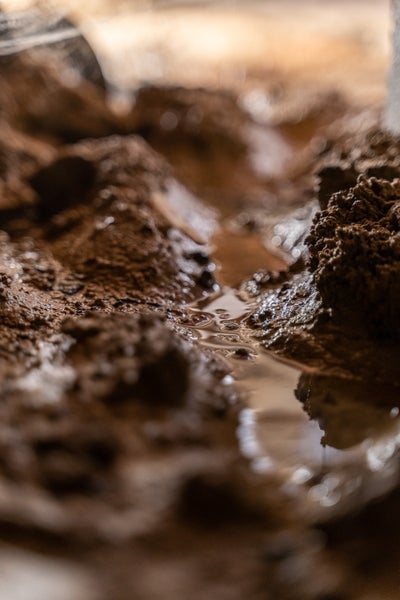
What Is Expansive Soil?
Simply put, expansive soil is soil with a lot of clay. The clay causes the soil to expand when it soaks up moisture and shrinks when it dries out, often by quite a noticeable bit. This swelling and shrinking – usually seasonal – creates movement in the soil.
This is a problem when a building sits on top of the soil. As the expansive soil expands, the structure rises a bit, and as the soil shrinks during the dry season, the structure falls back down. This up-down movement in the soil under the foundation is uneven and will eventually lead to differential settlement and structural damage. For more information, see our page about Foundation Settlement.
Expansive soil is present in all U.S. states and around the world.
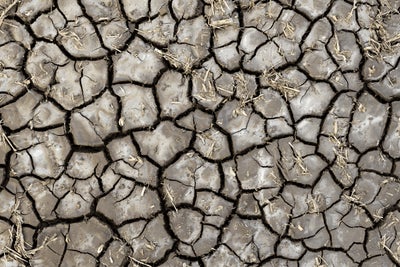
What Happens To A Foundation On Expansive Soil?
The volume of expansive soil is always changing. When the clay-rich soil absorbs moisture, its volume increases. When it dries out, there’s a decrease in volume. This movement in the ground puts a lot of stress on a foundation (all foundation types are susceptible to expansive soil) and can cause differential settlement leading to significant structural damage.
In some cases with a crawl space foundation, you may notice sloping floors. This is due to the posts and piers moving with the expansive soil. We crawl space support posts that are adjustable. In some cases, depending on the structural severity of the foundation, we may need to install push piers or helical piers in the areas affected by the expansive soil. In areas of the U.S. where basement foundations are common, expansive soil can also lead to bowed or cracked basement walls.
However, this doesn’t mean we can’t build on expansive soil. It just means we need to build correctly. This is why builders use geotechnical engineers to help them build houses on expansive soil.
Building On Top Of Problematic Soil
Yes, you can build on top of expansive soil. However, it must be done correctly, and this requires consultation with a geotechnical engineer. A geotechnical engineer will know the best way to ensure the soil’s moisture content remains stable and how to ensure the structure remains unaffected if there is a change in soil volume.
For more information, see our article, The Link Between Foundation Damage And Excess Soil Moisture.
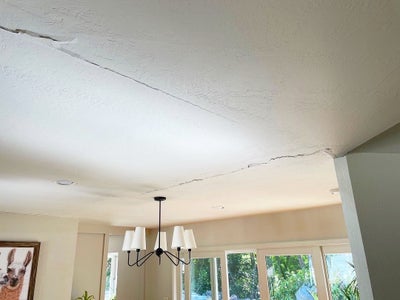
Does Homeowner’s Insurance Cover Damage Caused By Problematic Soils?
Unfortunately, homeowners insurance usually doesn’t cover foundation damage caused by expansive soil. However, if the problem resulted from a natural disaster like a flood, and your home has flood insurance, it might. Check with your insurance agent to be sure.
How To Avoid Foundation Problems
Since water is the cause of most foundation problems involving expansive soil, you can minimize the chance of foundation trouble by controlling groundwater around the foundation. In other words, you want to ensure the soil around the foundation isn’t saturated with moisture that can’t drain off. Here are some ways to do that:
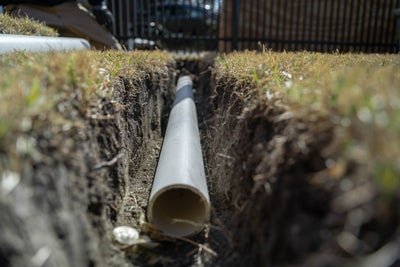
- Make sure your gutters aren’t full of leaves and other debris. Clogged gutters will cause water to spill over the side of the house and soak the soil around the foundation.
- Install downspout extensions to channel water away from the foundation before releasing it. Downspout extensions are inexpensive and easy to install. They should release water no less than four feet from the foundation.
- Install an underground downspout connected to a bubbler pot situated 10 feet or so from the foundation. Runoff from the gutter will flow into the underground downspout toward the bubbler pot. When the pot is full, it will pop up and release the water away from the foundation. (When the bubbler pot is empty, it’s barely visible on your lawn.)
- Regrade your yard so that it slopes away from the house. If the yard slopes toward the house, water will drain toward the foundation and saturate the soil.
- Don’t plant flowers, shrubs, and other vegetation beside the foundation. They might look beautiful next to the house, but when you water them, you’ll add water to the soil around the foundation.
- Improve drainage around the foundation by installing a drain tile system. A drain tile system ensures excess moisture in the soil is channeled into a sump pit and then expelled away from the foundation via gravity or a sump pump. When it comes to foundation waterproofing, nothing beats a drain tile system.
There are two types of drain tile systems: exterior and interior. An exterior drain tile system is installed around the outside perimeter of the foundation at the footing level. A shallow trench is dug and lined with gravel. A perforated drainage pipe is placed into the trench and covered with more gravel. Excess water in the soil enters the drainage pipe, gets channeled toward the sump pit, and is expelled via a sump pump or gravity.
An interior drain tile system is installed around the inside perimeter of the basement, under the slab.
Signs Of Foundation Trouble & How to Address Them
The following signs of foundation trouble may indicate a problem with expansive soil:
- Doors and windows that don’t open and shut properly
- Wall cracks
- Floor cracks
- Ceiling cracks
- Uneven floors
- Stair-step cracks in brick or masonry
- Leaning chimney
- Leaning porch
- Moldings that are separating from the wall or ceiling
- Torn or wrinkled wallpaper
- Drywall cracks or nail pops
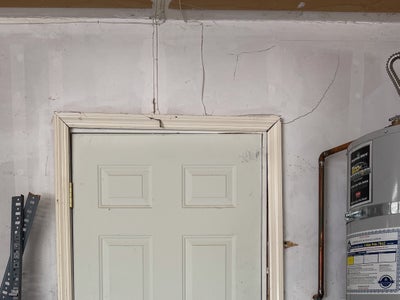
If you see any of the above, contact a foundation repair contractor or a structural engineer immediately for an inspection. Foundation problems worsen over time, so you’ll save money by acting early.
If you think your home might have a foundation problem and you’re in our service area in Northern California, contact us today. We’ll come out for a free inspection and provide you with a no-obligation estimate on customized repair solutions.
More Resources
Publish Date:
Last Modified Date:
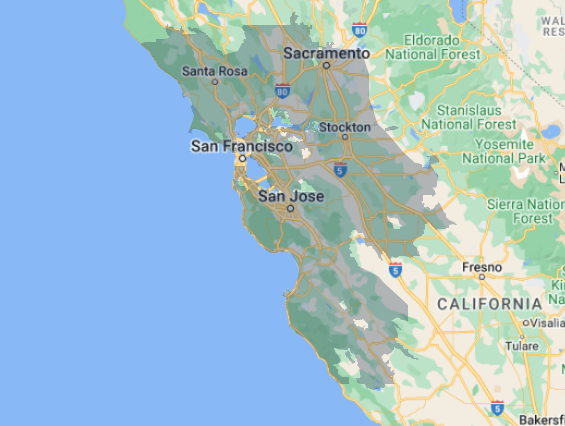
Our Locations
2333 Courage Dr. Suite C
Fairfield, CA 94533
1161 N Fair Oaks Ave
Sunnyvale, CA 94089

